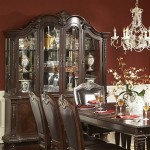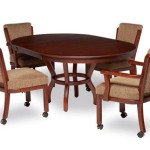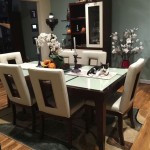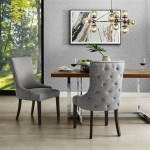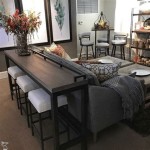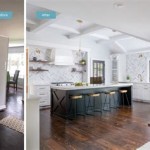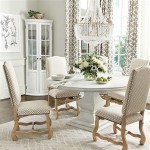Dining Room Glass Pendant Lighting: An Illuminating Guide
Dining room glass pendant lighting represents a sophisticated and versatile lighting solution, capable of enhancing both the aesthetic appeal and functionality of the dining space. These fixtures, suspended from the ceiling, offer a concentrated and often adjustable source of light, making them ideal for illuminating the central gathering point of a home. The material, glass, provides a unique opportunity for light refraction and diffusion, resulting in a dynamic and visually engaging atmosphere. This article provides an expository overview of various aspects related to dining room glass pendant lighting, exploring its design considerations, installation process, maintenance procedures, and its role in influencing the overall ambiance of a dining area.
Design Considerations for Glass Pendant Lighting
The selection process for dining room glass pendant lighting requires careful consideration of several factors to ensure the chosen fixture complements the existing decor and fulfills the specific lighting needs of the space. These factors include the size and shape of the dining room, the style of the furniture, the desired level of illumination, and the overall aesthetic preference of the homeowner.
Size and Scale: The dimensions of the dining room play a crucial role in determining the appropriate size and scale of the pendant lighting. A large dining room can accommodate a larger pendant or a cluster of smaller pendants, while a smaller dining room benefits from a single, more compact fixture. Overly large pendants in a small space can appear overwhelming, while undersized pendants in a large space may seem insignificant and fail to provide adequate illumination. A general guideline suggests that the diameter of the pendant, or the combined diameter of multiple pendants, should be approximately half the width of the dining table. The height of the ceiling is also a key consideration. Higher ceilings can accommodate longer pendants or multiple tiers, while lower ceilings require shorter designs to avoid obstructing the view or creating a feeling of claustrophobia.
Style and Aesthetics: Glass pendant lights are available in a diverse range of styles, from traditional and ornate to modern and minimalist. The chosen style should harmonize with the existing decor of the dining room. A traditional dining room with classic furniture may benefit from a pendant light with intricate details, such as etched glass or a wrought iron frame. In contrast, a modern dining room with clean lines and contemporary furniture may be better suited to a pendant light with a simple, geometric design and clear or frosted glass. The color of the glass also plays a role in the overall aesthetic. Clear glass allows for maximum light transmission and creates a bright and airy atmosphere, while colored glass can add a touch of drama and warmth to the space. Frosted glass diffuses the light more evenly, creating a softer and more subdued ambiance.
Light Output and Functionality: The primary function of dining room pendant lighting is to provide adequate illumination for dining and other activities. The required level of illumination depends on the size of the dining room, the color of the walls and furniture, and the personal preferences of the homeowner. Generally, a dining room requires a brighter level of illumination than a living room or bedroom. The type of light bulb used in the pendant also affects the light output and the overall ambiance of the room. LED bulbs are a popular choice due to their energy efficiency, long lifespan, and dimming capabilities. Warm white LED bulbs create a cozy and inviting atmosphere, while cool white LED bulbs provide a brighter and more focused light. Dimmers can be added to the lighting circuit to allow for adjusting the light intensity to suit different occasions and moods.
Glass Type and Texture: The type of glass used in the pendant light significantly impacts its aesthetic and functional properties. Clear glass, as mentioned previously, maximizes light transmission and showcases the bulb inside. Frosted glass diffuses light, reducing glare and creating a softer, more ambient light. Textured glass, such as ribbed or hammered glass, adds visual interest and further diffuses the light, creating unique patterns of shadows and highlights. Hand-blown glass often exhibits subtle imperfections and variations, adding a touch of artistry and individuality to the fixture. Stained glass pendants introduce color and pattern, creating a focal point in the dining room. The choice of glass type ultimately depends on the desired aesthetic and the desired level of light diffusion.
Installation Process for Dining Room Glass Pendant Lighting
The installation of dining room glass pendant lighting requires careful planning and execution to ensure safety and proper functionality. While professional installation is recommended, homeowners with electrical experience and a thorough understanding of building codes may choose to undertake the installation themselves. Regardless of who performs the installation, it is crucial to adhere to all safety precautions and follow the manufacturer's instructions carefully.
Safety Precautions: Before commencing the installation, it is imperative to turn off the power to the lighting circuit at the breaker box. This will prevent electric shock and ensure a safe working environment. It is also recommended to wear appropriate safety gear, such as gloves and eye protection. If the installation involves working at heights, a sturdy ladder should be used. Ensure the ladder is placed on a level surface and that someone is available to spot the ladder. If unsure about any aspect of the installation, it is always best to consult a qualified electrician.
Preparing the Wiring: The existing wiring in the ceiling junction box must be inspected to ensure it is in good condition and meets the electrical requirements of the pendant light. The wires should be properly insulated and securely connected to the junction box. If the wiring is damaged or outdated, it should be replaced by a qualified electrician. The pendant light will typically have three wires: a black (hot) wire, a white (neutral) wire, and a green or bare copper (ground) wire. These wires must be connected to the corresponding wires in the junction box. Wire connectors, such as wire nuts, should be used to ensure secure and insulated connections.
Mounting the Fixture: The pendant light typically comes with a mounting bracket that needs to be attached to the ceiling junction box. The bracket should be securely fastened to the junction box using screws. The pendant light fixture is then attached to the mounting bracket. The specific method for attaching the fixture will vary depending on the design of the pendant light. Some fixtures may have a canopy that covers the mounting bracket, while others may have a stem or chain that suspends the fixture from the bracket. Ensure that the fixture is securely attached to the bracket and that all screws are tightened properly.
Adjusting the Height: The height of the pendant light is crucial for both aesthetics and functionality. The bottom of the pendant should be approximately 30 to 36 inches above the dining table surface. This height provides adequate illumination for dining while avoiding glare and obstruction of the view. If the pendant has an adjustable chain or stem, the height can be easily adjusted. If the pendant has a fixed length, the chain or stem may need to be shortened by removing links or cutting the stem to the desired length. It is important to ensure that the pendant is level and that the chain or stem is hanging straight.
Maintenance and Care of Glass Pendant Lighting
Maintaining glass pendant lighting requires regular cleaning and occasional repairs to ensure its longevity and optimal performance. Proper care will preserve the fixture's aesthetic appeal and prevent damage that could compromise its functionality.
Regular Cleaning: Dust and dirt can accumulate on the glass surface of the pendant light, reducing its brightness and detracting from its appearance. The pendant should be cleaned regularly, ideally once a month or more frequently if needed. Before cleaning, turn off the power to the lighting circuit at the breaker box. Use a soft, lint-free cloth to wipe the glass surface. For stubborn dirt or grime, a mild soap and water solution can be used. Avoid using harsh chemicals or abrasive cleaners, as these can damage the glass finish. Ensure that the glass is completely dry before turning the power back on.
Bulb Replacement: Light bulbs eventually burn out and need to be replaced. When replacing a light bulb, ensure that the new bulb is compatible with the pendant light fixture. Check the wattage rating of the fixture and use a bulb with the same or lower wattage. Overwattage bulbs can overheat the fixture and pose a fire hazard. Before replacing the bulb, turn off the power to the lighting circuit. Allow the old bulb to cool down before handling it, as it may be hot. When installing the new bulb, avoid touching the glass surface with your bare hands, as this can leave fingerprints and reduce the bulb's lifespan. Use a clean cloth or gloves to handle the bulb.
Inspecting Wiring and Connections: Periodically inspect the wiring and connections of the pendant light to ensure they are in good condition. Check for loose connections, frayed wires, or damaged insulation. If any problems are found, they should be addressed immediately by a qualified electrician. Loose connections can cause flickering lights, overheating, and even electrical fires. Damaged wiring should be replaced to prevent electric shock. If the pendant light is equipped with a dimmer switch, check the dimmer switch periodically to ensure it is functioning properly. A faulty dimmer switch can cause erratic lighting behavior or even damage the light bulb.
Addressing Glass Damage: If the glass of the pendant light becomes cracked or broken, it should be repaired or replaced as soon as possible. A cracked or broken glass is not only unsightly but also poses a safety hazard. Sharp edges can cause cuts, and broken glass can fall and damage the surrounding area. Depending on the extent of the damage, the glass may be repairable. Small cracks can sometimes be repaired using a glass repair kit. However, if the glass is severely damaged, it should be replaced. Replacing the glass may require disassembling the pendant light fixture. If unsure about how to disassemble and reassemble the fixture, it is best to consult a qualified electrician or a lighting professional.

Tordis U Loop Clear Glass Pendant Light Screed

Lynley Contemporary Glass Cloud Pendant Light

Hubalu Glass Pendant Light Screed

Jachuf Glass Orb Pendant Light Vault

Baird Modern Minimalist Sphere Glass Pendant Light

Hotel Glass Pendant Light Bar Lamp Ceiling Living Room Chandelier Lighting

Tordis U Loop Clear Glass Pendant Light Screed

3 In 1 Crystal Pendant Lights Modern Chandeliers Lighting Flush Mount Ceiling With Adjustable Hanging Cord For Kitchen Island Dining

Our Guide To Glass Lighting Soho Blog

15 Dining Room Lighting Ideas To Create The Perfect Ambience


